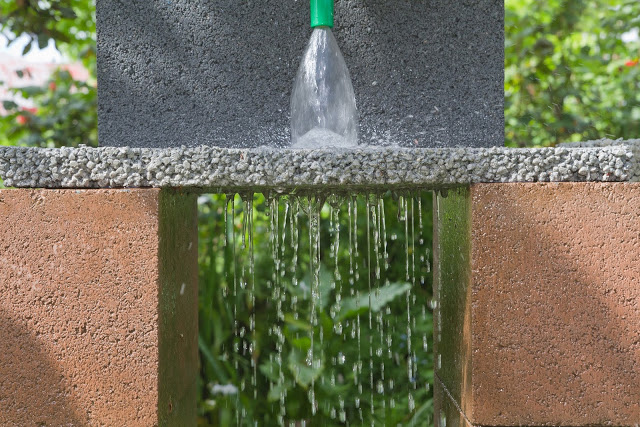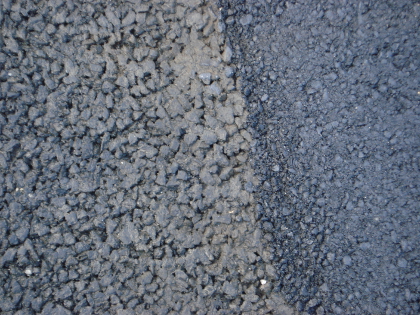Permeable pavements
Contents |
[edit] Introduction
A pavement with base and sub-base that allows the water to infiltrate or pass through the surface is known as Permeable Pavement. It not only helps to reduce the surface run off but also effectively traps the pollutants and solid particles in the water avoiding ground water pollution.
Evaporation of water at or below the surface also produces surface cooling, as opposed to the traditional heating of paved areas. This is especially beneficial in cities which experience extremely high temperatures in summer – traditional “blacktop” temperatures can make some public spaces unusable in warmer weather.
Generally, permeable pavement structures consists of a pervious / permeable surface course which may be of Asphalt concrete or Portland cement concrete laid over a layer of fine aggregates, which acts as a filter layer for infiltrating storm or rain water. Underneath this filter layer is a uniformly-graded gravel course to store water, which ultimately penetrates into the ground. General design practice requires an un-compacted natural ground, which allows relatively easier discharge of water avoids any standing water under the pavement structure that may cause structural failure.
Permeable pavements are generally recommended for residential, commercial and urban areas but not highways, motorways and streets with heavy traffic loading as these pavements are not designed with structural capacities to support such loads.
[edit] Advantages
Permeable pavements offer many benefits, both aesthetic and practical. Some of the benefits are listed below:
- Reduces storm water runoff, total water volume, and flow rate.
- Treats water runoff.
- Increases groundwater infiltration and recharge.
- Provides local flood control.
- Improves the quality of local surface waterways.
- Reduces soil erosion.
- Reduces the need for traditional storm water infrastructure, which may reduce overall project costs.
- Increases traction when wet.
- Reduces splash-up in trafficked areas.
- Extends the life of paved areas in cold climates as there is less cracking and buckling from the freeze-thaw cycle.
- Reduces the need for salt and sand use during the winter, as there is little or no black ice.
- Requires less snow-plowing.
- Reduces groundwater pollution.
- Offers evaporative cooling.
[edit] Disadvantages
Some of the disadvantages associated with these pavements are:
- Highly contaminated runoff can be generated by some land uses where pollutant concentrations exceed those typically found in storm water.
- Heavy traffic loads can lead to pavement failure.
- In cold climates, salts used for the removal of snow, contains chlorides that could migrate through the porous pavement into groundwater.
- Frequent maintenance is required to prevent the blockage of pores.
- Additional maintenance cost compared to conventional pavement.
[edit] Related articles on Designing Buildings Wiki:
IHBC NewsBlog
Purcell’s guidance on RAAC for Listed Buildings in England & Wales
The guidance specifically focuses on Reinforced Autoclaved Aerated Concrete (RAAC) in listed buildings.
IHBC Membership Journal Context - Latest Issue on 'Hadrian's Wall' Published
The issue includes takes on the wall 'end-to-end' including 'the man who saved it'.
Heritage Building Retrofit Toolkit developed by City of London and Purcell
The toolkit is designed to provide clear and actionable guidance for owners, occupiers and caretakers of historic and listed buildings.
70 countries sign Declaration de Chaillot at Buildings & Climate Global Forum
The declaration is a foundational document enabling progress towards a ‘rapid, fair, and effective transition of the buildings sector’
Bookings open for IHBC Annual School 12-15 June 2024
Theme: Place and Building Care - Finance, Policy and People in Conservation Practice
Rare Sliding Canal Bridge in the UK gets a Major Update
A moveable rail bridge over the Stainforth and Keadby Canal in the Midlands in England has been completely overhauled.
'Restoration and Renewal: Developing the strategic case' Published
The House of Commons Library has published the research briefing, outlining the different options for the Palace of Westminster.
Brum’s Broad Street skyscraper plans approved with unusual rule for residents
A report by a council officer says that the development would provide for a mix of accommodation in a ‘high quality, secure environment...
English Housing Survey 2022 to 2023
Initial findings from the English Housing Survey 2022 to 2023 have been published.
Audit Wales research report: Sustainable development?
A new report from Audit Wales examines how Welsh Councils are supporting repurposing and regeneration of vacant properties and brownfield sites.

















